Thanks for stopping by to watch the progress and Happy Thanksgiving (yesterday - sorry it's a little late). I hope you all had a great holiday. It's been raining this past 4 days that I had off of work, so no concrete work this trip home. I did get into the shop a little and tied up a few loose ends with the plane building. I also figured I could use the time to work on a blog update. In addition, last week I had the opportunity to visit Ray for a few days and we ran his airplane both days while doing some troubleshooting. So, I don't have a lot to include in this update, but here's what I got:
1. Retaining Wall Project Is Rained Out
2. Finishing Some Wing Jig Work
3. Rib Smasher Hydraulic System
4. Running Ray's Airplane
5. Bryan's Latest Update
6. Fracis and Robert (Kit #11) Update
1. Retaining Wall Project Is Rained Out - Well, it's now officially winter weather in northern California. When it rains more than 2 days in a row, it's winter! That means that the ground turns to "Marshmallow Fluff" and you cannot walk on it or work with it. If you don't have it packed down and graveled by now - you will pretty much have to wait for spring for it to dry out and become manageable again. Before the rains started though, I did get most of the first tier of wall poured. Here's what it looked like then with one section of cap put on:
Then, I got 2 more sections of cap poured on it. Here's the cap poured on the south end of the wall:
In the second tier phase, I'll be going up with another 18 inches all along the back of the 1st tier cap. Eventually, it will look like this cross section along the entire retaining wall:
I also got 3 more sections of cap cut out of the bank and formed up, but couldn't get it poured before the rain started. Here's what that currently looks like (notice the mud that has already sloughed off the side of the hill behind the forms):
I also managed to get (finally) the rain gutters and downspouts on the roof in the back of the shop. Here's that:
So, that's what's been keeping me tired and sore for the past several weeks! However, since the rains are now upon us, I moved back inside and started to get a few airplane related things done again. I had to walk around and stare at things for a while to help me remember where I was at with most of these projects (before I dropped everything to work on retaining walls).
2. Finishing Some Wing Jig Work - When I was fabricating the wing jig, I left some work to be done with the posts. Namely, fabricating some "L" shaped reinforcing plates and putting them in place on the posts. Here's the plates that I fabricated from 1/4" steel plate:
These just help stiffen the 90 corner from the jig feet to the posts. Here is a pic showing where they will go (approximately):
On the wing jig there are supporting posts in three places: 1) at the wing tips; 2) at the wing junctions; and 3) in each MLG wheel well. On my wing jig the wing tip posts and the wing junction posts are welded in place. But, the post in the MLG wheel wells have to be made removable so that you can test the MLG once it is installed into the wing. Here you can see the center posts with the plates drilled, tapped and bolted on (center) and the wing junction posts with the plates welded in place (front and back):
Finally, one more small job done that has been "hanging fire" for a while. These plates really made a big difference how rigid the wing jig is now, compared to without them. Excellent. On to the next job(s).
3. Rib Smasher Hydraulic System - It's time to get going on the hydraulic system for the 100 ton rib smasher. I started by spending an evening trying to figure out the most simple way to plumb all the parts that I laid out in this system schematic that I posted in the last update:
Here is the hand-drawn version of what I came up with:
The check valves come as double ended 1/4" MPT (Male Pipe Thread), so they will just screw into each of the 4 ports on their respective manifolds. Then, the two TEE's will have female connections on all 3 sides, except that one of the opposing sides will have a swivel fitting. That one swivel will allow everything to thread together and make one complete rigid unit (2 manifolds, 2 TEE's, and 4 check valves) to mount onto the side of the press between the reservoir and the pump. (You can see the tank and pump mounted to the press as you read further below).
I decided that the most economical way to get this system built would be to order some parts and make the rest. The parts to order are: five 1/4" hoses, 2 adapter fittings, two 1/4" TEE fittings and four 1/4" check valves. The next morning I headed out to the local hydraulics shop and ordered everything but the check valves. For those I went online and ordered them from Motion Industries - I'd previously researched them online. The items I will fabricate include a hydraulic reservoir and 3 manifolds.
Next up was getting a start on the manual pump. The manual pump that I bought online was apparently a project that someone started, but never finished. One side of the pump had a 1/4"x2" angle iron that was used to mount the pump. But the opposite side only had a "floating" plate that wasn't secured in any way. So, for starters, I fabricated 2 angle iron clips to weld to the existing angle iron side of the pump to allow for easier mounting to the side of my press. Then, I fabricated 2 pieces of flat steel with nuts welded to one side to mount on the back side of the pump that would hold the position of the plate on the other side. After that, I aligned the "floating" plate and welded the ends of the flat steel to the far side plate to keep it in position and make it not "floating." Now, two short 1/4" bolts hold the whole assembly together. It worked well, check it out:
Here is the unit installed on the side of the press:
From there, I moved on to the fabrication of the reservoir. I started with a piece of 3"x4" steel tube that I got for nothing from a local fab shop. It needed some cleaning up, but the price was right. I cut off two pieces that were 12" long each. The first one looked like this:
Then I cut one side off of each of the two pieces so that it looked like this:
Then I joined the two halves and filled in the holes to make the main body of the tank:
Next, I fab'ed the bottom plate and a 1/4" female pipe bung. Here it is just before welding:
Later, I fab'ed the top with a fill hole and added another 1/4" return line bung on one side near the top. Here's the tank after welding it all up:
This was my first experience with building a liquid tight tank. I figured that I should probably give it a leak test before mounting it. Good thing I did! When I first filled the thing with water - it leaked like a sieve. It turned out to be quite a task in repetitively filling, checking, grinding, welding (many times) to find all the hairline cracks and get them patched up. I am (admittedly) not the best welder, but I didn't think welding would leave so many hidden cracks. I finally got it sealed up and I left it filled with water over nite to make sure that there weren't any slow leaks. It passed, eventually. Here's the tank during final leak testing.
And, here is the tank mounted to the side of the hydraulic press:
Now, I am waiting for the parts to show up from the local hydraulics shop and the online order. In a few weeks I should be able to get some time in the shop and start putting all the pieces of the hydraulics system put together.
Schedule Sidebar - It will be a while before I get back into the shop. I'm working the day job almost steadily until the 2nd week in Dec. Then, my first 4 days off in Dec I'm going to take a truck and trailer down to Salinas and help Chuck's wife (Nancy) dispose of the stuff in Chuck's hangar. Nancy has finally gotten the myriad necessary things done after Chuck's death and is now ready to tackle cleaning out the hangar.
Several folks have spoken up and want to buy many of the tools and machines that Chuck had in the hangar. I'm going to help her get the big things down, out of the hangar and delivered to the next owners - as needed. Then, when everything is gone that everyone has spoken for, I'm going to purchase all that remains in the hangar from her. It will be a lot of hardware, fittings, small hand tools, sheets of metal, shelves, etc., etc. I will eventually be able to use all of that stuff in the Prowler business, so I'll load it all up and take it back to the shop. And, it helps Nancy out so that she can turn the hangar back over to the city. That project will keep me busy and I'll be "building the company" (so to speak), but not directly working on the airplane for a while.
4. Running Ray's Airplane - I was really fortunate to have a few days down in LA "on call" without having to actually fly and made it out to see Ray and his airplane again. His wife was out of the county on a trip and we took advantage of the opportunity to hang out, talk Prowlers, and burn some gas with his airplane. I took several videos of the engine runs, but my camera video lacks great quality. Also, you'll see that my camera strobes the prop and makes it look like it's standing still, but it is really running at 62.5% of engine speed.
STARTING VIDEO - In the starting video you will hear the airplane start and then die. Ray says "This is what it does." What he is referring to is that the engine is not (currently) idling very well at all. The fuel control below about 1000 rpm is very unstable and non-linear. The engine runs very rough below about 750 rpm (if at all). The engine will start to die if you pull the throttle back much below 700 rpm. You will hear that a lot through all of these videos. When it's starting to die, you can try to tease a little more throttle in, and nothing will happen. Then you try a little more, and nothing happens. Then a little more, and nothing happens. Then, you move the throttle just a bit and the engine will catch again and surge straight to 1200-1500 rpm. Here's the aircraft starting:
WARM-UP VIDEO - The engine takes a while to warm up even on a fairly warm day in Ray's side alley. Of course, the cowlings are off now, which helps keep the engine cool. After about 3-5 mins of idle at or above 1000 rpm the water temp starts to rise. Then about 10 mins in, the oil temp starts to come off the peg and eventually stabilizes around 140 deg. In this video you will hear the engine spin down like it is gonna die, then it surges back up to high idle. The fuel control technician thinks that the idle section of the fuel control head may have to have the idle springs, balls and diaphragms replaced in the system. Right now, Ray is waiting to hear from the technician before he pulls the unit off and sends it back to the company to do this work. Here is the engine running during warm-up:
CYCLING THE PROP VIDEO - Once the engine is warmed up, it will idle better at (and below) 1000 rpm. We could get it to idle (rough idle) at about 750 rpm once it warmed up. Then Ray began cycling the prop to warm up the hub and see what the effect was on engine oil pressure. The prop control system seems to function nominally. The change in rpm during this video is only due to the prop cycling from low pitch to high pitch and then back to low pitch. These were all done at about 1000-1100 rpm.
If you look closely the prop governor is located toward the back of the engine, just above two thick white ground wires. As Ray is cycling the prop, you will see the prop control lever on the top of the governor (it lays on it's side) go downward (for the high pitch, low rpm setting) and the engine rpm will start to drop. Then it will go back upward (for low pitch, high rpm setting) and the engine rpm will pick back up. It takes a while for the rpm to drop on the first cycle, remember the oil in the prop control system is still pretty cool. Then on the subsequent cycle, the rpm drop is much quicker. Here is the video of cycling the prop:
HIGHER POWER RUN VIDEO - In this video, the engine is already warm and Ray is starting again after a short shut down to chat about some observations. After the engine starts, he runs it at a higher rpm for a while (about 1500rpm and 15" MP). We found that when the engine speed is above about 1100 rpm, the throttle control and the engine response is pretty linear - meaning that if you advance the throttle a little, you will get a little increase in the engine rpm, etc.
This engine is powerful! I didn't get it on video, but on one start the engine surged pretty harshly and the prop wash literally blew the gates open behind the airplane (you can see the gates on the last video). The gates are steel framed and wood covered. The prop wash bent a 1/2" steel pin that goes thru the steel frame and into the concrete drive to hold the gate shut!! I began to imagine holding the stick behind that much power in the air. Should be fun - someday. Here is the start and a higher power run:
VIDEO VIEW FROM INSIDE - Here's some video from over Ray's shoulder while he's testing the LH and RH ignition systems. The Dynon's are not on in this video (he turned them on later), so all you see is a reflection in the top screen. The engine tach is on the upper right side and you can see it's pretty steady on about 1100 rpm. You will see Ray changing the ignition from both, to LH to RH and back on the lower right side. I'm not sure what the black button is that Ray pushes in the video - I'll have to ask him the next time we chat.
He has installed UMA gauges for all his engine parameters. The lower row of gauges on the RH side are (from L to R): Oil Press, Oil Temp, Water Temp, and then LH and RH fuel quantity. Between the LH and RH fuel quantities is a switch to switch the fuel quantity indicators from the aft main tanks to the forward tanks in each outboard wing section. Above the RH fuel quantity gauge is the Aux fuel quantity gauge (but you can't see it in the video as the canopy handle blocks it out). All of them are currently not hooked up and showing off scale above full.
Then, above the LH fuel quantity is the the Fuel Flow gauge. It used to be Fuel Press, but Ray replaced it. The fuel control technician recommended the fuel flow, as having fuel flow indications will help them map the engine and finish the set-up of the fuel control system. It's a very handy gauge to have! The small UMA gauge above those two is the alternator/battery volts. Then, the larger instruments to the left of that is the Engine RPM (above) and MP (below). Here is a view from the inside:
FRONT VIEW VIDEO - I took some video off of the tripod, so it's not as steady and I move around. You can see the gate that I mentioned earlier in the background. Just forward of the firewall you can see the intake for the supercharger. That mates up to a NACA scoop on the engine cowling when it is installed. And, here is a view from the front:
It turned out to be pretty productive time doing these engine runs. Fortunately, Ray was able to arrange to get the local technician for the fuel control system out to see the airplane run. I got to jump in and run the plane while Ray and the technician discussed what was happening. As I mentioned earlier, he has decided that there is something that needs replacing or rebuilding in the idle control section of the fuel controller.
Before the technician got out to work with us, Ray wanted to check his advance on the ignition systems to make sure that they were working correctly and not something that could be compounding the problem. Here's a pic I took when we were putting the RH ignition back together:
Update - since I wrote the information above about running Ray's airplane, he has updated me a couple of times. He has now sorted out the rough running ignition. Turns out that there was a missing bushing on the right distributor that was allowing the ignition to get much to retarded at low idle speeds. He's replace the bushings in the distributor and reduced the high rpm advance to about 27-28 degrees BTDC. He reports that the stable idle speed has dropped about 200 more rpm and there now is no noticeable difference between the L and R ignitions.
He also has taken his hydraulic pump out and is working on reducing the output pressure that the pump puts out. It was making a lot more pressure than was necessary to swing the gear, and he wants to get the pressure output more closely matched to what is actually needed to operate the gear.
The fuel control body will come off of the airplane soon to send to the manufacture to get rebuilt and adjusted for this application. While that is happening, Ray is going to begin prepping the aircraft for paint and coordinate with the fella that is going to paint the airplane. They're going to work out what paint, the paint scheme, and logistics to get the job done. More to follow as Ray approaches his first flight sometime next spring. Nice work Ray!
5. Bryan's Latest Update - I am constantly astonished at how fast Bryan continually makes progress on his airplane. His latest creation was a forward baggage compartment in his Prowler. Since he is building his airplane around a diesel engine option, it provides him with some opportunities to do some things that the typical V8 engine project will not allow. The two most notable of these are:
1.) The ProwlerD only uses one wing radiator for water cooling, the other is used for oil cooling.
2.) Because diesel engine fuel consumption is so much lower than gas, Bryan doesn't need nearly the same amount of fuel capacity as a conventional Prowler. That alleviates the need to have an aux fuel tank in front of the instrument panel, like the conventional Prowler does.
Since Bryan doesn't need to have his aux tank in the fuselage (his is in one of his main inner wing tanks) - he has that room available for a good size baggage compartment up there. That's important because he significantly reduced the baggage compartment behind the cockpit by placing the first aft fuselage former at a reclined angle. He was able to provide quite a bit more room in the aft seat in the cockpit by reclining the back of the cockpit, but the trade-off was less baggage space, until now:
Nice metal work Bryan! That makes a really nice baggage compartment space. In addition to reclining the aft wall of the cockpit, Bryan added "cut-outs" in the sides of the cockpit where the aft pilot's legs will be when seated with the feet in the foot wells. The will significantly increase the room near the forward pilot's hips where the aft pilot's legs normally "squeeze in there." This was a very crafty solution to that problem. Here' a look:
Here is a look at the latest revision of his instrument panel plan:
In addition, Bryan got his hydraulic unit back from the manufacturer and they didn't find anything out of specs with it. So, it appears like the system is being "resistant" to a thorough bleeding. More on that as it develops.
6. Fracis and Robert (Kit #11) Update - I have exchanged a few emails with Francis recently. You may remember that he and Robert are the new owners of Kit #11 that they purchased from Nicolas in France. Here is one of the emails from Francis (with my changes in [ ] ).
Hello Todd, some news of (Kit) n°11
The "hangar" is finish but no electricity (7weeks that we wait) it's long!! We need electricity for the jig and air compressor!
I have finaly find rivets in -7 for deriveting [re-riveting?] the spar (some rivets are not very nice).
For alodine I find some alodine in "gel"condition (for the main part it' s perhaps a solution for you). When i make [built] my Skyote, there have a big spool [pool?] of alodine at my job (Air France) 6foot wide, 6 foot deep and 20feet long! Same one for deoxidine for the "hydraulique" aluminium tube of jet liner. But, they discard it! So I find alodine in gel condition!
The french law for experimental autorized may be more than 200hp if we dont class in voltige. We have bought a 200hp oldsmobile engine whith reduction unit and rear accessory box. Do you now if there are bolt on on 350 chevy or rodeck?
Sorry for my english!
Francis
Thanks for the update Francis. Please keep us posted on your progress.
That's it for this update. I want to get it published and it's already a day later than I'd planned. Thanks again, as always for stopping in to see how things are going here at Prowler Aviation. I'll plan on one more update before the end of the year. Until then, I hope you all have a very happy holiday season.























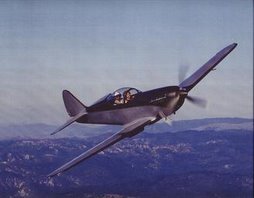
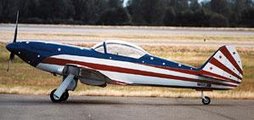
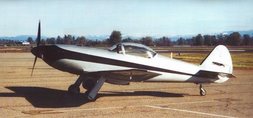
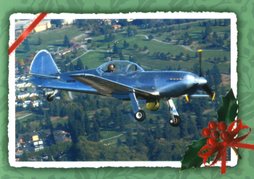
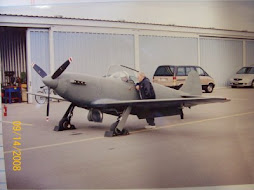
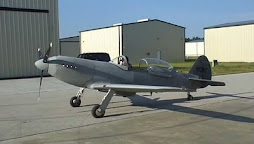

No comments:
Post a Comment